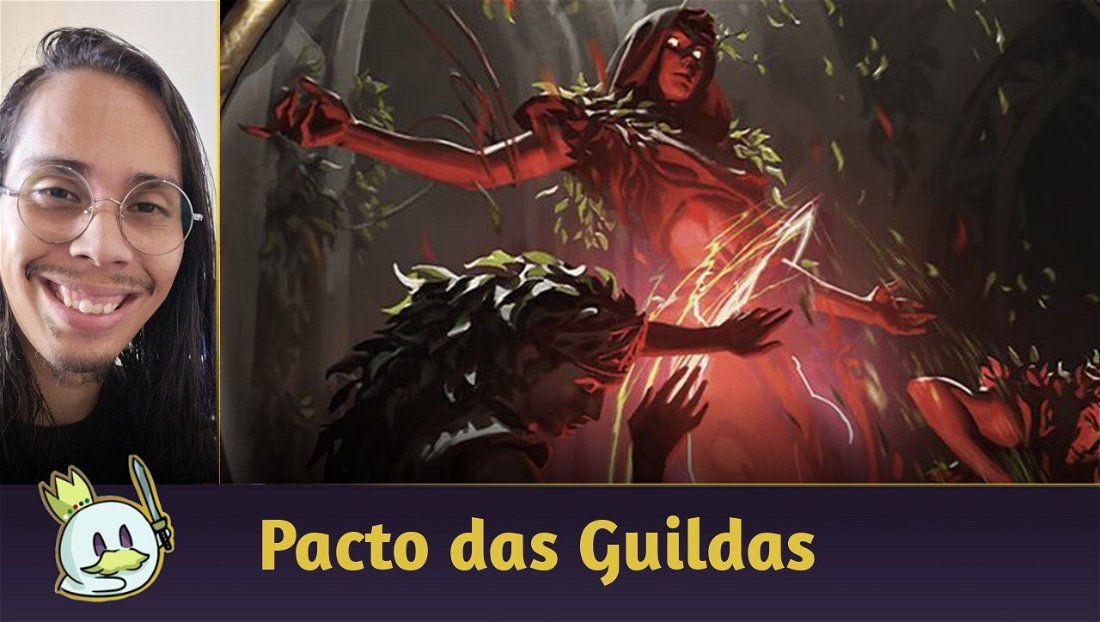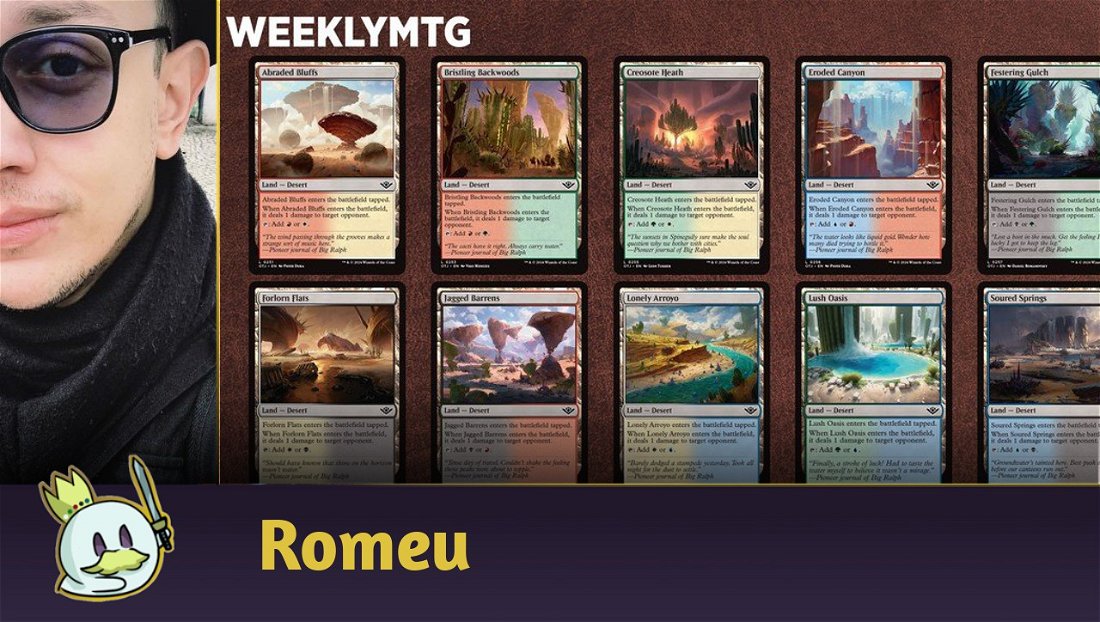About the Deck
Tolarian Terror is one of the most important creatures in Pauper nowadays. Ever since it got here, it formed the metagame with strategies that use it as its focal point, such as Dimir Terror and Mono U Delver. These decks use Mental Note and Thought Scour to feed the graveyard and put several serpents on the battlefield for as little mana as possible.

However, players are now using a lot of hate cards to fight these strategies, and some have even added Relic of Progenitus to their main deck.
Due to the release of Murmuring Mystic, new versions of Terror decks came along. These lists no longer focus on accelerating the graveyard, and instead focus on a control gameplan, using the most efficient counters and removals in this format.
Izzet Terror, Skred Terror, or simply Izzet Control, is one of these versions and has been conquering excellent results in the hands of many players on Magic Online and Tabletop. Skred is one of the main reasons to start playing this version, considering it is one of the best red removals in this format: this card removes both early game creatures and bigger late game creatures because of the synergy it has with snow-covered lands.

Lightning Bolt and Breath Weapon complement your removal kit, allow you to deal with several threats, and even help you end the game by dealing damage to your opponents directly.
Besides your removals, your counters will be incredibly important in this strategy to control the game and protect your game plan.
Counterspell is this format's premium counter, and can interact with any spell. Spell Pierce is quite versatile, and its cost really helps this deck's game plan, but it loses value as the game goes on. Lose Focus is also quite versatile and can improve on later turns.

Card advantage is one of the pillars of Pauper nowadays, and, in blue decks, cantrips are a must. I like having a balance between each of our three main cantrips.
Preordain fits this list really well, considering it combines card selection and card advantage in the best way possible. Ponder complements Preordain; it can also dig deeper in our deck and allows us to change the top card in our deck, be it by reorganizing it or shuffling it. Brainstorm works really well with the cards above as well, besides protecting our resources from being discarded, like with a Duress, for instance, and we can also use it in our opponent's turn. Brainstorm also works really well with fetch lands, and Lórien Revealed is practically a fetch land that draws us several cards late game, which is simply absurd in this list. It also fixes your mana and allows you to splash red properly, considering it can get you even dual lands.
Augur of Bolas can fit into the category of card advantage, considering it will frequently allow you to put resources in your hand, and the fact it can block really well and in some cases attack really well makes it even better.

Finally, we have this deck's threats.
Murmuring Mystic and Tolarian Terror are our main threats, and can dominate the board incredibly fast. Mystic is simply absurd if it sticks to the board, and can bury your opponent in value any time you cast a sorcery or instant.
Crimson Fleet Commodore and Azure Fleet Admiral are both threats and engines in this deck because of the Monarch. The Monarch is another way to win the game based on value alone. If you retain control of the Monarch, as the turns go on, you'll get even more ahead, and, at a certain point, the game will be completely under your control.

Mulligan and Game Posture
As this deck has a lot of cantrips and cheap spells, you'll be able to keep hands with fewer lands than usual, as long as you make sure to curve correctly.
Avoid hands with too many lands and not a single cantrip or that have a lot of heavy spells. Pauper is an incredibly fast format; earlier turns are usually very decisive, and if you can't interact with your opponent properly, you can get run down in no time.
An ideal starting hand for most matchups will look something like this:

Sideboard Guide

This list's sideboard is well-prepared to deal with almost any threat in this format. For instance, we have Gorilla Shaman and Cast Into the Fire to deal with the ever-rising threat of Affinity decks.
We added Pyroblast for the mirrors and other blue decks, Breath Weapon to deal with aggro decks and decks that summon a lot of small creatures, Hydroblast to deal with red decks and interact with Pyroblasts, besides Relic of Progenitus to deal with graveyard decks and strategies that are too recursive.
Vs. Azorius Affinity
UW is the main version of Affinity nowadays, but we still have Jeskai and other versions, apart from Grixis itself. However, against UW Affinity, you'll basically be facing an extremely fast and efficient aggro deck that can create a lot of value and easily punish you.
So, avoid slow hands at all costs and prioritize interacting with your opponent's threats on the first few turns, always playing around All That Glitters and Metallic Rebuke.
Putting a Tolarian Terror on the board can stabilize the game, and Murmuring Mystic is simply incredible in this matchup. Be careful with Gingerbrute because it can crush all your hopes effortlessly.
In

Out

Vs. Golgari Initiative
This is a difficult, complex matchup. Basically, it will be a cold war based on value, in which whoever makes the first mistake loses.
The Monarch plays an important role in this matchup, so be careful - usually, whoever becomes Monarch first always ends up behind, considering the chances of your opponent having a removal and becoming the Monarch right afterward are incredibly high.
Avenging Hunter is also incredibly dangerous, so be careful: even if you do remove it, this won't guarantee you the Initiative on the way back. Tithing Blade has made this deck even stronger against Terror decks, and the massive number of removals your opponent may have makes everything harder.
In

Out

Vs. Mono-Red Kuldotha
This matchup depends on how you interact with your opponent. Kuldotha is very explosive and fast, but Izzet has the perfect tools to deal with it.
Survive the first few turns, keep the board under control, and play your threats to guarantee your victory.
In

Out

Vs. Dimir Faeries
New and old titans meet in this matchup. UX Faeries have dominated this format in the past and almost disappeared for a while, but the Dimir version is once again popping up in the metagame, and is yielding results to players quite consistently.
Tolarian Terror and Murmuring Mystic are incredible threats in this matchup, but you should take on a defensive approach, always reacting to what your opponent plays, and specially playing around Spellstutter Sprite, which is one of the most effective cards in this deck. Remove all Faeries and don't let your opponent be the Monarch for too long.
In

Out

Vs. Boros Synthesizer
This is one of the worst matches for Izzet Control. Boros has many evasive creatures and burn. It is a fast deck that can create a lot of value, besides the fact it has a well-prepared side deck to deal with countless threats.
You should remove their flying threats, Kor Skyfisher and Glint Hawk, and use your most precious resource, your life points, really well.
The Monarch is dangerous in this matchup because your opponent can become it relatively easily, and even Terror can't be as efficient as it would be in other matches.
In

Out

Final Words
Izzet Control is powerful and has become an excellent choice for the current metagame because it has efficient answers and a solid game plan. Currently, it is one of the best decks in this format, and an excellent investment for anyone who wants to play Pauper, considering all UX decks basically share the same base, and only change a few cards.
This is the end of another article. I hope you liked it. Leave your questions, suggestions, comments, and/or feedback in the comment section. I'll try to answer them all.
See you next time!















— Comments 0
, Reactions 1
Be the first to comment